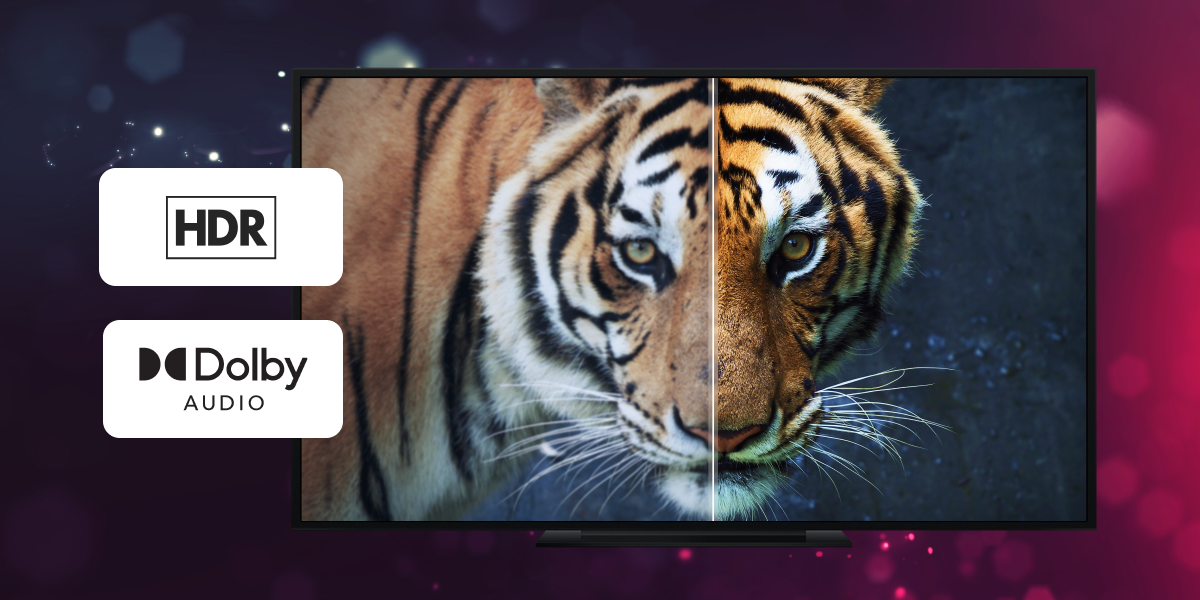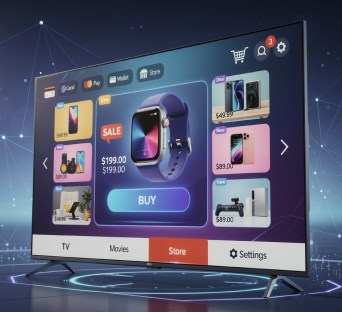Product request
You are looking for a solution:
Select an option, and we will develop the best offer
for you
HDR, Dolby Vision, and Other Standards — What Matters for an IPTV Operator in 2025

The IPTV market is evolving rapidly, and in 2025, users are no longer satisfied with just a stable video stream. Customers expect an experience — vibrant colors, deep contrast, and realistic tones. This is why HDR standards for IPTV operators, such as HDR10, HLG, and IPTV with Dolby Vision support are no longer an optional extra but a significant competitive advantage.
In this article, we will explain what an operator should consider when adopting new standards, how complex the integration can be, and what risks come with technologies that just a few years ago were seen as “premium.”
Why HDR Standards Are Critical for the Viewer Experience
The image is the first thing a viewer evaluates when starting a video. HDR (High Dynamic Range) defines image quality: it expands the color gamut, increases brightness range, deepens shadows, and makes highlights richer. The bigger the contrast between what the viewer sees in premium apps and on your service, the higher the churn risk.
In practice, HDR is not a single format but a family of solutions:
HDR10 — the most common and basic standard, supported by most devices (HDR10+ IPTV compatibility may also be relevant for advanced setups).
HLG (Hybrid Log Gamma) — compatible with real-time broadcasting, making it suitable for UHD broadcast in IPTV.
Dolby Vision — an advanced format with dynamic metadata, delivering top-tier visual fidelity, but requiring additional licensing and STB compatibility at the hardware level.
If an operator doesn't work with these HDR formats, they are at a disadvantage in streaming quality from the start. This is especially true for UHD and 4K HDR broadcasting for operators, where HDR is the norm rather than a luxury.
What to Consider When Implementing HDR and Dolby Vision
Transitioning to new formats is not just about a software update, it changes the entire next-gen video delivery IPTV chain — from encoding to decoding, including IPTV middleware, hardware, and CDN delivery.
Device compatibility. Even if you broadcast a stream in HDR10 or Dolby Vision over multicast IPTV, there is no guarantee the viewer will receive it in the intended quality. You must account for support on:
- client devices (Smart TVs, IPTV set-top box with HDR, mobile apps)
- players and decoders
- HDMI interfaces (versions below 2.0 may not support 4K HDR)
If you manage your own STB hardware, test HDR support in advance. For ready-made platforms like Android TV, check compatibility regularly after OS and player updates.
Transmission and codecs. To deliver a stream at the required quality, modern codecs are essential: HEVC (H.265) is mandatory for HDR. H.264 cannot handle higher color grading depth efficiently (codec efficiency matters here).
The platform should support:
- HDR metadata transmission
- multichannel audio, including Dolby Atmos
- adaptive bitrate streaming (ABR) with bandwidth control
Infrastructure and load
HDR, and particularly Dolby Vision, require more traffic and system resources. The operator should pre-test:
- CDN throughput
- stream stability during peak loads
- adaptive bitrate and buffering performance
Modern IPTV middleware solutions like Ministra PRO already address these requirements. The platform supports adaptive streams, works with HEVC, and integrates with external CDNs and custom players capable of processing HDR.
Preparing Content Without Losing Compatibility
Even if part of your library is already HDR, the viewer values consistent playback logic. It is recommended to:
- label HDR content in the interface
- auto-switch between HDR and SDR based on device capability
- test playback on all popular platforms (Tizen, WebOS, Android TV, browser)
Also ensure correct EPG setup, proper cover display, and interface adaptation to bright/dark scenes.
Licensing and Legal Considerations
Working with Dolby Vision requires licensing — not only for content but also for hardware (including the player). Formats like HDR10 and HLG are more flexible — no royalties required — but they lack the advanced dynamic image control of Dolby Vision.
If hosting HDR content from external content providers, verify that content rights management agreements explicitly cover this format. Some contracts may include only SDR.
What an Operator Gains from HDR Implementation
- Investing in support for modern image standards offers more than visual benefits:
- ARPU growth — users are willing to pay for premium quality, especially in higher-tier packages
- Churn reduction — HDR is a default streaming expectation in 2025
- Advertising monetization — brands prefer placing video ads on channels with high streaming quality
- Reputation boost — a technologically advanced future-proof IPTV service inspires greater trust
Implementing HDR, Dolby Vision, and other image standards is a strategic move for building a competitive digital broadcasting service. Operators who properly prepare their IPTV infrastructure setup, ensure device compatibility, and maintain high-quality content delivery will secure a strong market position.
The Ministra PRO platform already offers the tools needed for 4K HDR broadcasting for operators, including codec support, stream handling, and subscriber access control. This allows operators to focus on enhancing the user experience and expanding their content offering.
Recommended

IPTV and E-commerce: Prospects of Built-in Online Stores on the TV Screen
Over the past few years, IPTV platforms have gone beyond being merely a channel for delivering television content.

How to Properly Organize Backup Servers for IPTV Streams
The IPTV and OTT market is growing rapidly, with the quality of broadcasts continuing to improve, the number of channels increasing, and the functionality of set-top boxes and applications expanding.

The Evolution of Codecs: From H.264 to AV1 and VVC — What Should Operators Choose?
Over the past decade, the video market has undergone a rapid shift from linear TV to flexible IPTV/OTT services, where image quality and delivery efficiency play a crucial role.










